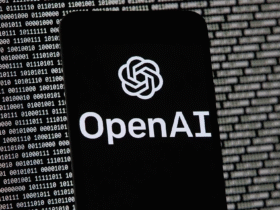Due to the competitive nature of the digital market and the growing extent of digital and social media marketing, advertisers need to measure up with its consumers’ and technology’s ever-changing behavioral patterns. Businesses increasingly depend on creative advertising tactics to grab attention and achieve meaningful engagement. These are the top 5 advertising developments that positively change modern marketing.
- Sustainable Advertising
Increasing environmental awareness among both corporations and people fuels the emergence of sustainable advertising. Such an approach includes views that do not sacrifice advertising pursuits, but rather include sustainable views by promoting green and socially responsible products or services.
Sustainable advertising is more than greenwashing, which includes proper messaging and ensuring the ads are socially responsible. Such branding is essential in distinguishing brands from other market players as it helps in building a customer base that appreciates such constructive marketing.
The modern customer is environmentally and socially conscious and today’s consumers – millennials and Generation Z are even more willing to support brands that care for the environment and society.
2. Increasing Personalisation and Data Usage in Digital Marketing
Personalization has become one of the major techniques to be used in the inbound social media marketing strategy. Companies tap into the knowledge of their audience’s profile and preferences by creating ads that relate to the consumers by using the available data. This also means that the messages can be made more appealing, which in turn leads to a higher opportunity of conversion.
All the facts point to the reason why marketing generates revenue for a firm relevant to its personalization. Research has established that in comparison to undifferentiated campaigns, targeted messages that are adjusted to the individual significantly increase click and conversion rates. Advertisements that are relevant to their audience’s interests are better received by consumers and this can help strengthen brands. As more businesses begin to collect and analyse data from their consumers via social media and other platforms, the use of data in advertising is sure to increase significantly.
3. Artificial Intelligence (AI) and Automation within Digital Advertising
AI and automation are transformative aspects when it comes to advertising technology usage within the digital field today. Tasks such as audience segmentation and campaign launch and management have been simplified through the use of AI, which helps companies cut costs and time and improve their respective efficiency. With the help of AI Tools, Marketing Today can explore a lot of data concerning consumer behavior patterns utilizing a given platform or website with ease.
Another area where AI advances ad delivery is in the personalization of ad content. An example is the movie-watching recommendation algorithm that Netflix has for its users that relies on the movies they have watched. AI used in predicting what people would buy can be useful for advertisers in coming up with ads that they know would have of more impact on the audience.
In addition to these, AI systems, and automated message services have equally found usefulness in customer care and instant answers to consumer questions. These enhancements not only improve customer satisfaction but also make it easier for businesses to follow through with their sales leads.
On the other hand, the benefits of AI and automation should also be considered challenges by advertisers. With the increase in the use of AI, issues like privacy, data security, and excessive personalization have also increased. To fully reap the benefits of automation, it is important to find the right balance between human and machine control.
4. Video Content in Digital Advertising
Video content is more effective in getting a marketing message across than any worded content or a single picture. In all use of social media, be it short videos on Instagram or extensive video tutorials on YouTube, video content is effective in retaining and grabbing attention.
There are platforms like YouTube Facebook and Instagram as well as TikTok which have facilitated the process of video content distribution. Explanatory videos, short videos, and customer feedback videos are some of the most efficient video types used. For instance, they are useful in understanding a certain product or a product application in the case of tutorials, or they provide proof of the legitimacy of a brand in the case of testimonials.
5. The Integration of Video Content and Social Media
Video content and social media must complement each other to effectively engage audiences. This synergy goes beyond merely sharing promotional video content and extends to actively reaching different brand audiences. Interactive components such as likes, shares, and comments play a pivotal role in fostering relationships between brands and customers, transforming the engagement into a mutual interaction rather than a one-sided affair.
Using video ads, particularly as part of a social media campaign, can produce truly great results. As such, by using video content as an advertising message properly for each web service, benefits can be drawn. For example, short entertaining video messages are usually more suited for TikTok and Instagram, whereas longer, more serious messages are best suited for YouTube.
Final thoughts
These five advertising trends, including sustainable advertising, personalization, artificial intelligence and automation, video content, and video and social media, show how businesses connect with their customers in the new digital and social marketing age. As new technologies develop and customer behavior changes, businesses will need to be proactive in integrating appropriate advertising tactics that combine data and the human aspect.














Leave a Reply